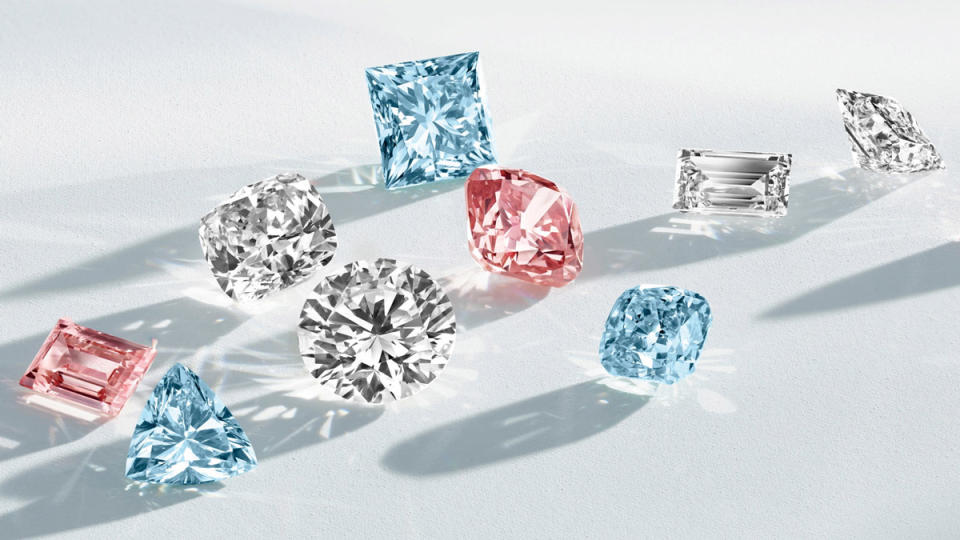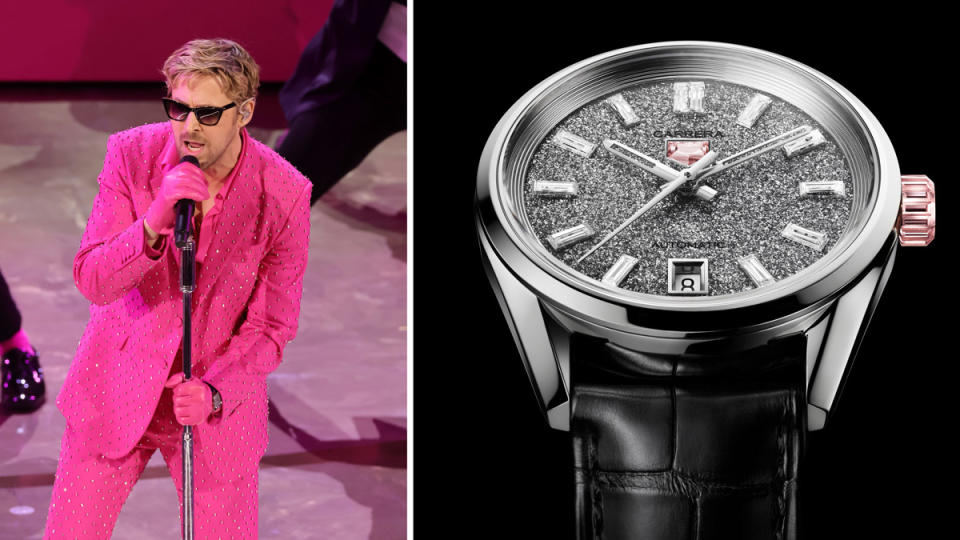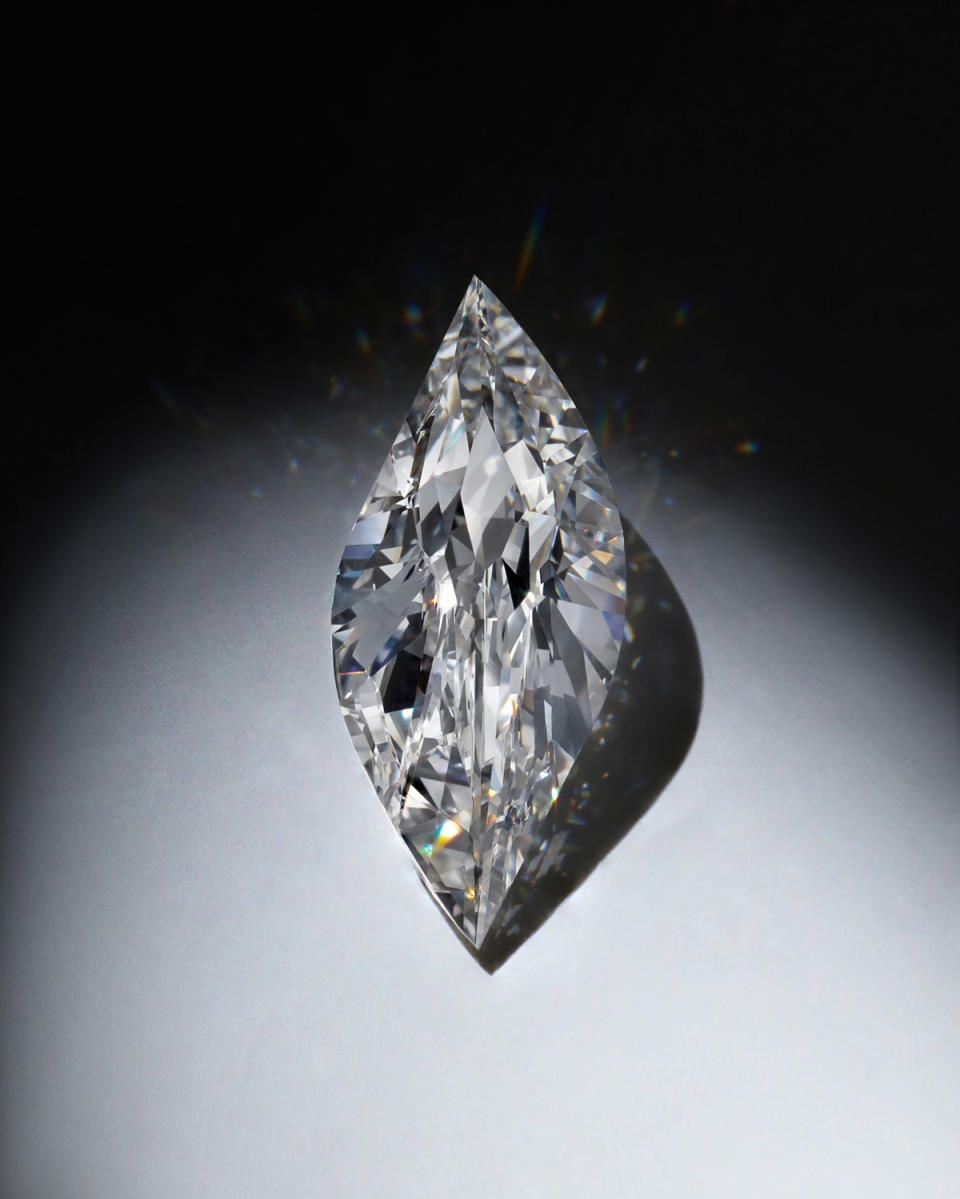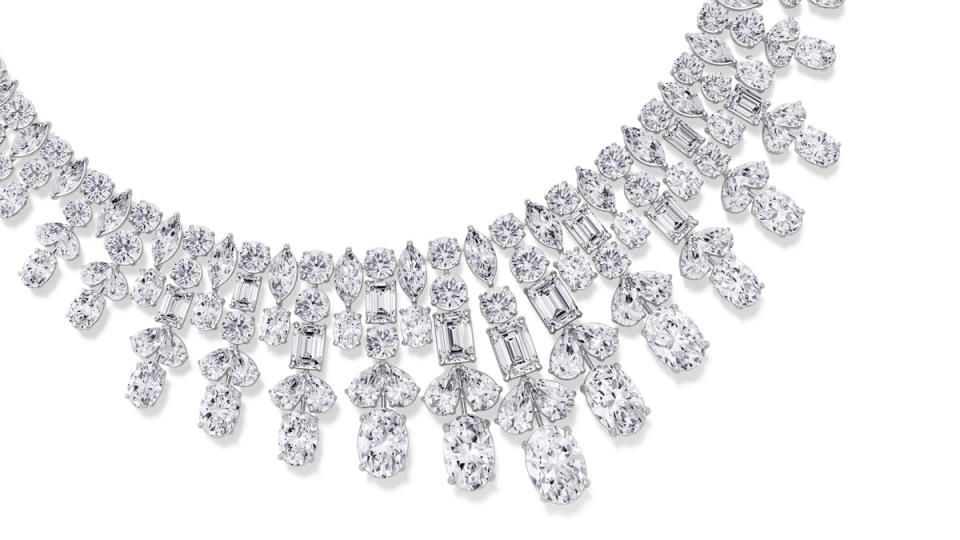Inside the Emergence of Lab-Grown Diamonds and How They Could Shape the Industry

In late February, Ben Hakman, founder of Fire Diamonds, a lab-grown diamond company in New York, received an extraordinary bespoke request from a retail jewelry client. A customer wanted a lab-grown replica of the French Blue, the 69-carat shield-shaped blue diamond stolen in 1792 during the French Revolution and thought to have been recut into the 45.5-carat Hope Diamond.
Hakman, an expert in diamond coloration, was unfazed. “It’s almost done,” he tells Robb Report in late March, just as his team in Surat, India, the epicenter of the global diamond cutting industry, is putting the finishing touches on a 12-carat lab diamond with the same distinctive facets as its historic inspiration. The only apparent difference between the two gems, besides carat weight? Hakman’s stone was produced in a matter of weeks; the original French Blue was probably a billion years in the making.
More from Robb Report
This Insane 6.2-Carat Pink Diamond Ring Is Expected to Fetch up to $15 Million at Auction
Fabergé's Newest Bejeweled Egg Is Inspired by the James Bond Classic 'Octopussy'
From Vegan Leather to Silence: How Luxury Cars Are Becoming More Eco-Conscious From the Inside Out
Welcome to the vanguard of diamond synthesis, where lab-grown diamonds — in many cases, chemically, optically and physically identical to their mined counterparts — are shaking up the diamond industry in ways both foreseen and wildly unexpected.
The Market for Lab Diamonds
Scientists have been able to synthesize diamonds since 1954, when GE became the first company to successfully grow them in a laboratory using a method known as High Pressure, High Temperature (HPHT), which mimics the conditions under which the gems are formed inside the earth. Until about a decade ago, however, diamond jewelry retailers disavowed the created product as an existential threat to the established diamond order.
It’s a tale that predates the current lab-grown diamond frenzy. In a letter to the editor dated Jan. 4, 1922, Alfred Eppler cautioned readers of the New York-based trade publication The Jewelers’ Circular and Horological Review to be suspicious about “the alleged discovery” of making synthetics: “An intelligent scientist, if he did obtain the secret of making diamonds, would first of all keep it to himself until he put out enough stones to make a fortune. For were he to give out the secret before that time, he would simply make his discovery valueless to the commercial world.”
Valueless doesn’t quite describe lab-grown diamonds today — Hakman, for one, speculates that his version of the French Blue could retail for $60,000 — but it’s not far off. You don’t need to be a jewelry insider to know that lab-grown diamonds (often abbreviated to LGD) are widely available on the cheap. Since 2018, when Edahn Golan, a diamond industry analyst in Israel, began tracking the market for lab-grown goods, wholesale prices have plummeted — by nearly 90%. Retail prices are also falling, just not as precipitously — as anyone who’s seen commercials for The Jewelry Exchange, a low-price retailer in Tustin, Calif., that touts 1-carat LGDs for $599, could tell you.
How did we get here? First, a brief science lesson: The growth process Hakman used is known as chemical vapor deposition (CVD). Invented in the 1950s and refined in the 1980s to produce gem-quality diamonds, CVD has been commercially viable for about 15 years. Compared with HPHT diamonds, CVD stones typically require smaller and less expensive equipment. In India, where about 90 percent of the world’s diamonds are cut and polished, diamond manufacturers have embraced CVD because it allows them to grow material quickly and cheaply, thereby keeping their workers busy and their factories humming. (“One guy has 500 machines, the other has 1,000, another one is shooting for 5,000 machines this year,” Avi Levy, president of the International Gemological Institute North America, tells Robb Report.)
CVD diamonds are grown by introducing a carbon-rich gas, such as methane, into a vacuum chamber and microwaving the gas to break down its molecules. The resulting carbon atoms accumulate on a diamond seed crystal placed inside the chamber and grow, layer by layer, into a diamond.
Quality varies dramatically, depending on the amount of time growers take to nurture their CVD rough and how well they’ve finetuned their “recipes” (some of which are even available on Google). “I know serious, high-end growers that will stop a growing process halfway through if it looks like the diamonds are not getting to where they want them to be,” Golan says. “Whereas some are just growing; if it comes out bad, they will be goods you’ll polish and sell for peanuts.”
The ability to grow rough—even poor-quality rough that yields inferior polished diamonds bearing gray and brown tinges, tell-tale signs of a rushed growing job—has become critically important in the wake of the Russian war in Ukraine and the sanctions against Russian diamonds, which have deprived cutters in India of a steady stream of raw goods. But war is not the only reason why the market for lab-grown diamonds is over-saturated.

It’s helpful to go back to 2018, when De Beers, the diamond mining company headquartered in London, introduced Lightbox, its lab-grown diamond subsidiary. Natural diamond proponents greeted the move with skepticism (largely tied to Lightbox’s plan to sell its diamonds for just $800 a carat, then well below market value), but many lab-grown advocates hailed it as legitimizing. At the time, the market for created diamonds was still nascent. Then came the pandemic. Demand for fine jewelry, including lab goods, particularly in the engagement and wedding ring category, exploded. Many young couples were seduced by the category’s accessible pricing, but widespread claims that lab diamonds are more eco-friendly and sustainable than mined stones also made an impact. Since then, even as many of those claims have been refuted (after all, lab diamonds still require a significant amount of non-renewable energy to produce), LGDs have become ubiquitous in America, where it’s no longer uncommon to find women shopping for groceries adorned in 4 carats of colorless diamond studs.
The Future of Luxury
The fact that lab-grown diamonds are so plentiful, and the market for them so unstable, has scared off most luxury brands and retailers. A small but influential cohort of lab-grown evangelists, however, is convinced that created diamonds represent the future of luxury — and eco-consciousness has almost nothing to do with it. In their vision of lab’s future, consumers are willing to pay a premium for a consistent supply of high-quality lab diamonds in unusual cuts and colors that simply don’t exist in the natural world. Hakman, for example, is convinced that brand logos — like the triangle-shaped “Prada-cut” lab diamonds the Italian fashion brand introduced in October — are the perfect lab diamond use case: “You can control what you grow for the actual shape that you need,” he says.
Nancy Leach, a former Swarovski marketing and PR executive who in 2023 founded Gemedge, a marketing consultancy that publishes an annual trend publication, says a handful of brands are pushing the category in this direction. “You’re going to see that lab-grown gives designers — whether it’s for watches, jewelry or any other medium — this playground that you just cannot have with mined diamonds,” she says.
The Swiss watchmaker TAG Heuer recognized that potential in 2022 when it unveiled the Carrera Plasma Tourbillon Nanograph at the Watches and Wonders fair in Geneva. Housed in a 44 mm black anodized aluminum case set with lab-grown diamonds in elongated custom shapes, the watch’s pièce de resistance was a unique 2.5-carat lab-grown diamond crown at 3 o’clock carved from a single piece of rough created by Capsoul, a diamond design start-up in Israel. The watch’s retail price: 350,000 Swiss francs, or $390,000.
Ryan Gosling, a longtime TAG ambassador, wore the next-gen version of the watch, the Carrera Plasma Diamant D’Avant Garde bearing a pink lab-diamond crown, to the Oscars in March. When he performed “I’m Just Ken,” the watch’s sparkly, textured dial glinted in the spotlight (you might even say it had Kenergy).

TAG (the initials stand for Techniques d’Avant Garde) made clear that the goal of working with lab diamonds was to “do something that was yet to be invented,” Edouard Mignon, the brand’s chief innovation officer, told Robb Report when the original model was introduced. “That’s when we started to think about the possibilities of diamonds as a material.”
In the fine jewelry world, Unsaid, a Paris-based lab-grown diamond jewelry brand owned by Walking Tree, a jewelry design and manufacturing studio in Mumbai, is staking its future on fantasy cuts. Using CVD diamonds grown in the U.S. and India, and cut and polished in Israel based on research and development performed in Paris, the company has since 2022 introduced seven signature diamond cuts — including a wing-like cut known as the Phoenix, a spherical cut known as the Bubble and, as of this spring, a 37-facet cut called the Flame that takes a boldly contrarian approach to diamond cutting. (“Dark zones, in standard diamond cutting, are typically frowned upon and thus avoided to give diamonds a constant light play,” according to Unsaid. “When designing Flame, we wanted to replicate the luminous and non-luminous areas in actual fire and thus, our master artisans began to use the dark zones to our benefit, ultimately giving the patent shape its dancing silhouette.”)

“The big advantage with LGD,” Philippe Nobile, Unsaid’s chairman, says, “is that we can create cuts that match the emotion we want to bring to a collection.”
Ryan Shearman, a former product development engineer for David Yurman who in 2018 co-founded the lab-grown diamond jewelry brand Aether, thinks one of the lab-grown sector’s most promising features is its ability to produce diamonds of consistent quality, no matter the size, essentially on demand. “If I wanted to do some type of wonky kite shape that requires a piece of rough that’s at least, I don’t know, 15 millimeters long, I’m not going to find a lot of rough from mines that fits that mold. I won’t be able to build a collection around that,” Shearman says. “Lab unlocks that. I now have a consistent output. I can plan into that, and I can take bigger risks as a result.”
Magic Crystals
For luxury consumers, the other critical detail about man-made diamond crystals is that they are often cleaner and more limpid than their natural counterparts. That’s because colorless and near-colorless lab diamonds are usually classified as Type IIa, a designation referring to gems that are devoid of nitrogen. The element, present in Type I diamonds, lends stones a slightly yellowish tinge. Only 2% of natural diamonds fall into the Type IIa category.
“The reason why these diamonds are fascinating to people is because of their exceptionally rare nature, but also because visually, Type IIa diamonds look different than diamonds that are Type Ia,” Lindsay Reinsmith, co-founder of the San Francisco-based lab-grown diamond brand Ada Diamonds, says. “And that bright white appearance, because of the lack of nitrogen and other impurities, that pure carbon element is what makes them face up so beautifully.
“The other thing,” Reinsmith adds, “is there’s a repeatability to this high purity. In lab-grown, you can create Type IIa riviere necklaces, bracelets, chandelier earrings that have this bright white finish throughout. I think that aspect of the market is not fully understood. But the stones can speak for themselves.”

In June, Akshie Jhaveri, founder and creative director of Grown Brilliance, a lab-grown diamond jeweler in New York, was banking on that when she introduced the company’s first high jewelry collection, a range of 65 pieces—such as the $165,000 157-carat Monaco necklace—laden with large, colorless stones, some as big as 25 carats. “Why would you spend millions of dollars on one piece of jewelry that you are only wearing maybe once or twice in your lifetime?” Jhaveri says. “Buy it for a couple hundred thousand and get a few pieces or get something for you and your daughter.”
Even at less gargantuan sizes, the lab conversation always returns to price. That’s because it’s impossible to avoid. Lab diamonds translate into tens of thousands of dollars in savings for clients in the market for everyday luxuries, such as tennis necklaces they can pair with white t-shirts and jeans. At Vrai, the lab-grown diamond brand owned by West coast grower Diamond Foundry, a tennis necklace boasting 24 carats of colorless lab diamonds retails for $26,500. At De Beers Jewellers, the same style featuring natural stones costs nearly seven times that amount.
Nowhere is the chasm in pricing between lab-grown and natural diamonds as evident as it is in the bridal category. Consider some recent compare-and-contrast research Robb Report performed on an unseasonably warm winter day in New York City. At the Ada Diamonds showroom on West 56th Street, we admired a 4.52-carat E color lab-grown emerald-cut diamond with a sticker price of $13,750. We then walked around the corner and down the street to a famous jewelry emporium on Fifth Avenue, where we asked a saleswoman to show us another emerald-cut diamond, this one a D color natural stone weighing 3.28 carats. When she pulled the ring out of the showcase, she glanced at the tag and paused. “Oh, this one is $242,000,” the saleswoman said. “I’ll have to take you to the back room to look at it.”
Natural diamond devotees insist that value—lasting value—is the point. That when you buy a lab-grown diamond for $13,750, you may find that just one year later, its value has tanked, whereas a natural diamond will hold its value, or possibly even be worth more than what you paid for it (should you ever decide to trade it in). But lab-grown believers don’t see it that way. “Go buy a natural diamond engagement ring on 47th Street,” Shearman, of Aether Diamonds, says. “Walk across the street and try and sell it. Tell me how much value you recoup. It’s not very far off from an automobile in that case. So if you’re not looking at your car as an investment, you shouldn’t look at your engagement ring as an investment. The value is what you make of it.”
Best of Robb Report
Sign up for Robb Report's Newsletter. For the latest news, follow us on Facebook, Twitter, and Instagram.

